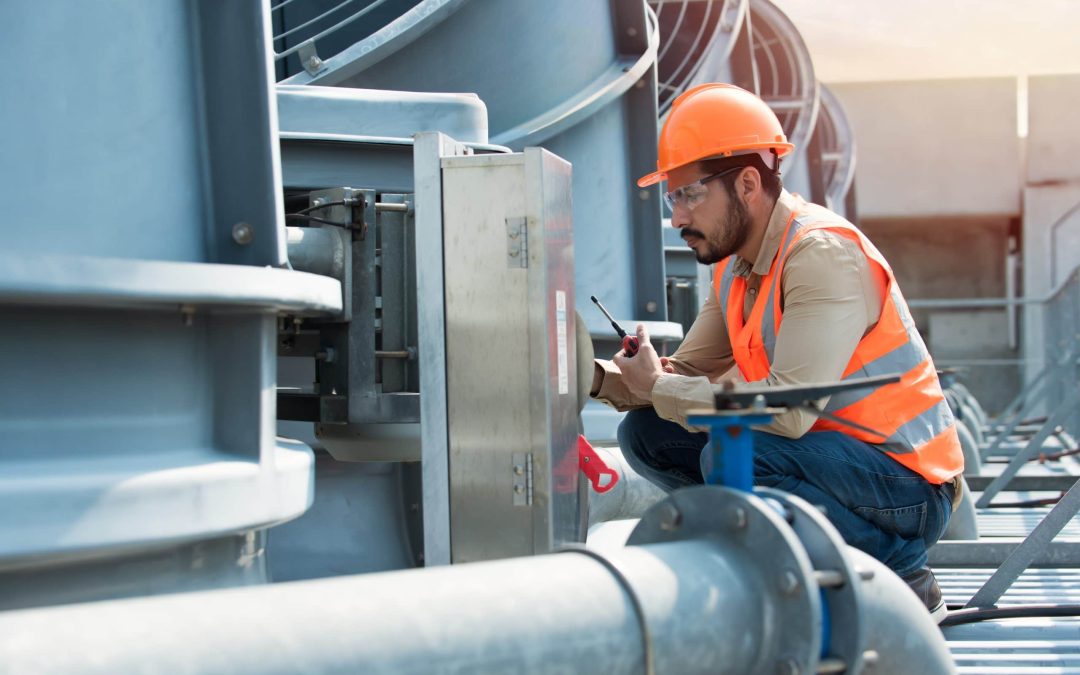Capacity and Load Requirements:
Finding the necessary cooling capacity is the first step in developing a water chiller. This involves understanding the load that the chiller has to support, which varies based on the application. The capacity is often expressed in kW or tonnes of refrigeration, and it is important to match the peak cooling load of the chiller with its capacity. A chiller that is too small may not provide enough cooling, whereas a chiller that is too large may cause inefficiencies and higher running expenses.
The load’s variability should be taken into account in the design. Throughout the day or the seasons, the cooling demand varies in various applications. Hence, to retain efficiency under partial loads, the chiller must be able to regulate its capacity. This is frequently accomplished by using several compressor systems or variable-speed drives.
Type of Chiller:
Water chillers come in different varieties, such as evaporative, water, and air-cooled models. Several variables, including water supply, local climate, space limitations, and energy efficiency targets, affect the choice of chiller type.
- Air-cooled chillers: In places where water is expensive or limited, air-cooled chillers are perfect. They dissipate heat by using the surrounding air, which in some situations may be more convenient but may be less effective.
- Water-cooled chillers: Water is a better medium for heat exchange than air, hence water-cooled chillers usually have higher efficiency. They do, however, come with additional complexity and maintenance needs because they need cooling towers and a dependable water supply.
- Evaporative-cooled chillers: Evaporative-cooled chillers are appropriate for environments with moderate water supply and high ambient temperatures because they combine the properties of both air-cooled and water-cooled systems, providing a balance between efficiency and water use.
The Energy Efficiency:
Because it affects operating costs and raises environmental concerns, energy efficiency is an important factor in chiller design. The energy efficiency ratio (EER) or the chiller’s coefficient of performance (COP) are important parameters that designers must take into account. The cooling delivered per unit of energy used is shown by these ratios. To improve energy efficiency, designers can include elements like:
- Variable Speed Drives: With the use of variable speed drives (VSDs), compressors, pumps, and fans can run more effectively under partial loads, using less energy when not at full capacity.
- Heat Recovery Systems: These systems can improve total energy utilisation by recovering waste heat from the chiller and using it for heating.
- Advanced Controls: By setting up intelligent controls and monitoring systems, chiller performance can be optimised. These systems can change parameters in real time in response to demand, environmental factors, and system health.
Environmental Impact:
The design of chillers is increasingly influenced by environmental factors. Refrigerant selection is crucial because conventional refrigerants with strong global warming and ozone depletion potentials, such as hydrochlorofluorocarbons (HCFCs) and chlorofluorocarbons (CFCs), pose a threat to global warming.
Natural refrigerants like ammonia (NH3) and carbon dioxide (CO2) or low-GWP refrigerants like hydrofluoroolefins (HFOs) are frequently used in modern designs. Designers should think about the chiller’s entire environmental impact, including water use, noise pollution, and greenhouse gas emissions, in addition to the choice of refrigerant.
Upkeep and Reliability:
Reliability is crucial for water chillers since they are frequently essential to the processes they support. This demands the careful selection of parts, materials, and design elements that reduce failure risk and facilitate maintenance.
- Choosing the Right Material: Parts that come into contact with water, particularly in water-cooled chillers, must be made of materials resistant to corrosion. This lowers the possibility of leaks or contamination while extending the system’s lifespan.
- Redundancy: To avoid downtime in the event of a breakdown, redundancy should be incorporated into crucial components such as pumps, compressors, and controllers.
- Maintenance Ease: The design should make it simple to inspect, replace, and repair components. This involves using simple components, placing access panels thoughtfully, and offering control and diagnostic systems that are easy to use.
Space and Installation Requirements:
Another crucial aspect of design, especially in spaces with restricted areas, is the chiller’s physical structure. For proper airflow, air-cooled chillers could need additional space; on the other hand, water-cooled chillers need space for cooling towers and related pipes.
Installation factors also include the chiller’s structural support requirements, particularly for rooftop installations, and the equipment’s proximity to other components to minimise piping lines and save energy losses.
FAQs:
1. How Can You Tell Whether a Chiller Needs Repair?
Unusual compressor noises, decreased chilling capacity, higher energy usage, refrigerant leaks, and erratic pressure or temperature readings are all indicators that a chiller may require repair. Additional indicators can include the control system’s alarms or a regular on/off cycle. It’s crucial to arrange a service checkup if any of these symptoms are seen to stop additional damage and make sure the system keeps working properly.
2. What Effect Does Ambient Temperature Have on Chiller Performance?
The operation of a chiller is significantly influenced by the ambient temperature, especially for air-cooled chillers. The chiller’s efficiency drops as the outside temperature rises because it gets harder to release heat into the surrounding air. Because water-cooled chillers use water, which can be chilled more effectively with a cooling tower, they are less susceptible to changes in outside temperature.
3. What is the Purpose of the Expansion Valve in a Chiller?
A chiller’s expansion valve controls how much refrigerant flows into the evaporator, where it absorbs heat and turns it into a gas. The expansion valve makes sure that the refrigerant is properly cooled and capable of absorbing the most heat from the chilled water loop by regulating the pressure and volume of refrigerant entering the evaporator.


